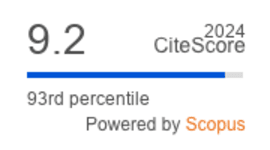The Antibacterial Activities of Secondary Metabolites Derived from Streptomyces sp.
DOI:
https://doi.org/10.36877/pmmb.a0000281Abstract
The spreading of infectious diseases caused by the emergence of Multidrug-Resistant (MDR) pathogens is a global threat that has led to numerous deaths annually. In view of this, there is an overwhelming need to discover new bioactive compounds with effective antimicrobial properties. Concurrently, the genus Streptomyces has a growing reputation as a potential biological source of various antibiotics and other bioactive metabolites. Streptomyces sp. has been isolated from different sources, including terrestrial and marine habitats with a myriad of promising compounds that could be used to treat MDR pathogens. Therefore, this study presents a systematic review of the antibacterial activities of Streptomyces-derived secondary metabolites. The Preferred Reporting Items for Systematic Reviews and Meta-Analyses (PRISMA) guidelines and checklist were employed in this study
to collect relevant articles from two research databases, namely PubMed and Science Direct. The selection process includes identification, screening, eligibility, and inclusion of articles. Several keywords and criteria were established for the screening and selection process. Based on the results, a total of 26 articles were selected from 70 potential articles. The articles were published between 2015 and 2020 with most studies being published in 2020, indicating an increased interest in Streptomyces and its derived compounds. Approximately 51 different PMMB 2022, 5, 1; a0000281 2 of 25 Streptomyces-derived compounds have been identified, ranging from crude extracts, pure compounds, and partially purified compounds. Various parameters were also used to assess their antibacterial activities, particularly the Minimum Inhibitory Concentration (MIC) (69%) and the zone of inhibition (11%). Moreover, the antibacterial activities of these compounds were effective on numerous gram-positive and gram-negative bacteria. Furthermore, 46% and 54% of the selected studies were focused on inhibiting MDR and nonMDR pathogens, respectively. In conclusion, both crude and purified compounds from Streptomyces sp. exhibited strong antibacterial effects. It is expected that extensive future research would develop a standard method to compare the antibacterial strength of each
extracted compound from Streptomyces sp. and determine the most effective bioactive compounds to treat diseases caused by MDR pathogens.
Downloads
Published
How to Cite
Issue
Section
License
Copyright (c) 2022 Rabia Mrehil Elsalam, Khang Wen Goh, Mahani Mahadi, Najwa Mohammad, Yaman Walid Kassab, Noraziah Mohamad Zin, Kok-Yong Chin

This work is licensed under a Creative Commons Attribution-NonCommercial 4.0 International License.
Author(s) shall retain the copyright of their work and grant the Journal/Publisher right for the first publication with the work simultaneously licensed under:
Creative Commons Attribution-NonCommercial 4.0 International (CC BY-NC 4.0). This license allows for the copying, distribution and transmission of the work, provided the correct attribution of the original creator is stated. Adaptation and remixing are also permitted.

This broad license intends to facilitate free access to, as well as the unrestricted reuse of, original works of all types for non-commercial purposes.
The author(s) permits HH Publisher to publish this article that has not been submitted elsewhere.



.png)

.jpg)
